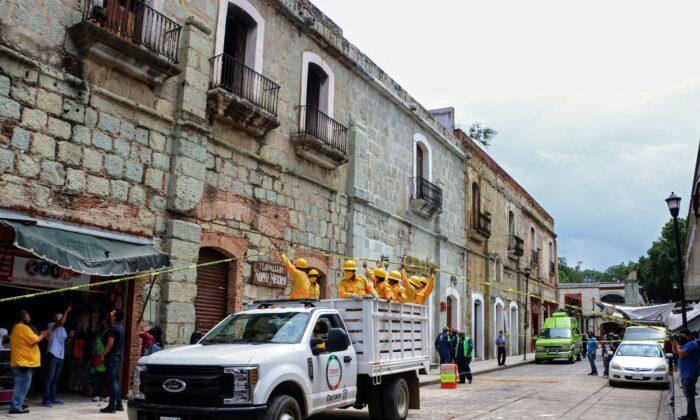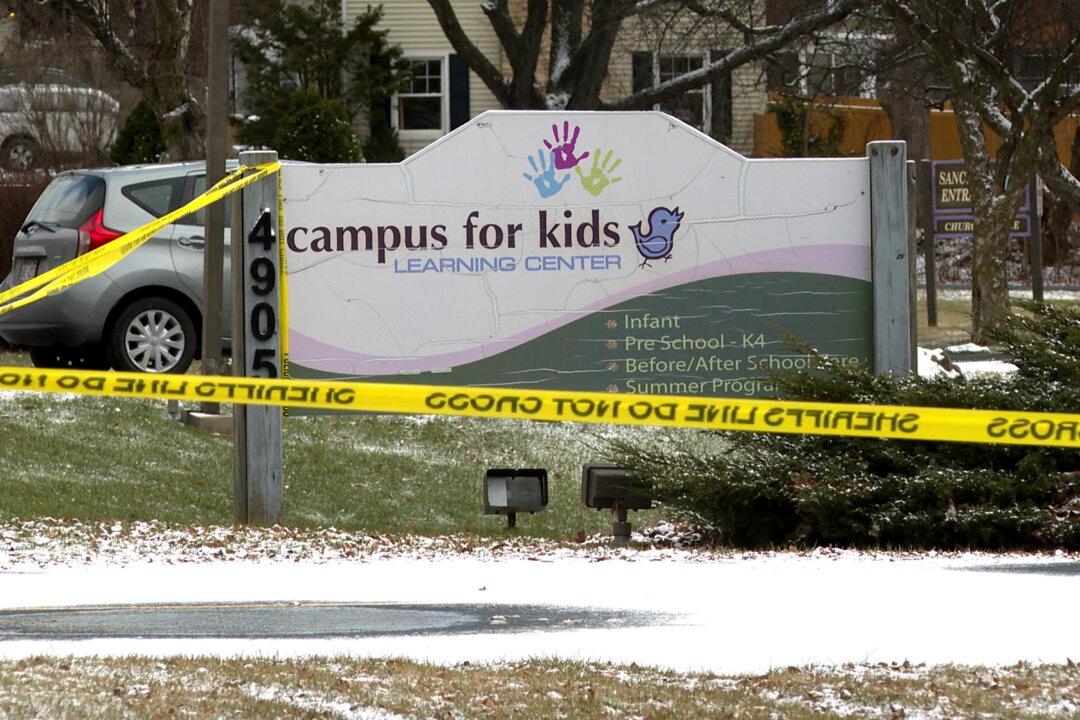MEXICO CITY—A powerful earthquake centered near the southern Mexico resort of Huatulco killed at least one person, swayed buildings in Mexico City, and sent thousands fleeing into the streets.
Mexico President Andrés Manuel López Obrador said one person was killed and another injured in a building collapse in Huatulco, Oaxaca. Otherwise, he said reports were of minor damage such as broken windows and collapsed walls.
Ports, airports, and refineries weren’t damaged, he said in a video-recorded phone conversation with his civil defense chief. There had been more than 140 aftershocks, most of them small.
Seismic alarms sounded midmorning with enough warning for residents to exit buildings. Power was knocked out in some areas.
Helicopters flew over downtown Mexico City and police patrols sounded their sirens.
Groups of people still milled around in close proximity on streets and sidewalks in some neighborhoods of the capital about an hour after the quake. Many were not wearing masks despite past appeals from municipal officials for them to do so as a way to curb the spread of the new coronavirus.
The U.S. Geologic Survey said the magnitude 7.4 quake hit at 10:29 a.m. (11:29 a.m. Eastern) along Mexico’s southern Pacific coast at a depth of 16 miles (26 kilometers). The epicenter was seven miles (12 kilometers) south-southwest of Santa Maria Zapotitlan in Oaxaca state.
It was felt in Guatemala and throughout south and central Mexico.
In Huatulco, a laid-back beach destination known for surfing and small, protected coves, the earthquake knocked goods off shelves and some rubble from buildings.
Mari González of the Princess Mayev hotel in Huatulco said staff and guests were able to evacuate the building before the quake, but that 45 minutes after the initial quake they were still outside as strong aftershocks continued.
“It was strong, very strong,” she said.
González said there was some visible broken glass and mirrors, but no major damage. The staff was waiting for the aftershocks to dissipate before fully evaluating the property.
Local news media reported damage to some buildings in the state capital, Oaxaca city. State officials said they were looking for damage.
The USGS estimated that some 2 million people felt strong or moderate shaking and another 49 million felt weak or light shaking.
The earthquake hit a quake-prone region where four underground tectonic plates come together. In the past 35 years, there have been at least seven magnitudes 7 or greater earthquakes, killing around 10,000 people — most of them in a 1985 8.0 quake.
“This has the potential to be a deadly earthquake and cause significant damage,” U.S. Geological Survey seismologist Paul Earle said. “This area is capable of and has had larger earthquakes in the past.”
“There will be aftershocks,” Earle said. “It is not unexpected to see a magnitude 6 at this point and a number of smaller ones.”
This quake happened when the Cocos plate, which is to the southwest of the area, slipped under the North American plate, Earle said.
“You’ve got all sorts of plates and they’re moving quickly,” Earle said. “The important thing is how fast the plates are moving relative to each other.”
The U.S. National Oceanic and Atmospheric Administration forecast a tsunami threat with waves 3 to 10 feet above tide levels along with parts of the coasts of Mexico. Smaller waves were expected through Central America, Peru, and Ecuador.
Guatemala’s national disaster agency issued a tsunami alert for its southern Pacific coast forecasting the arrival of waves up to a meter high. It advised people to move away from the sea.





